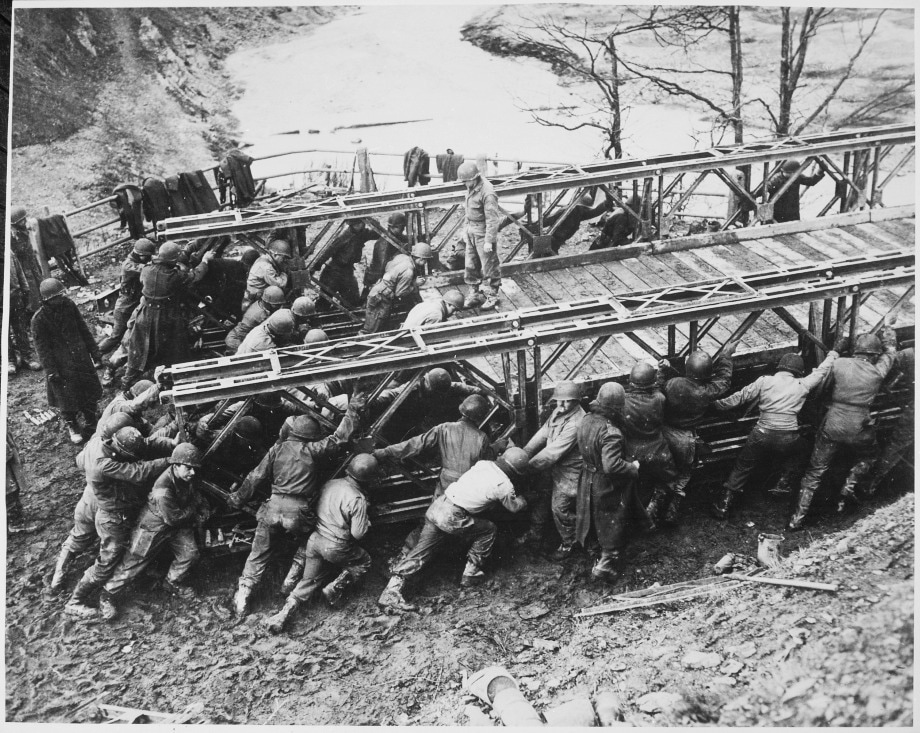What is a Bailey bridge, constructed in Wayanad after landslides?
The Indian Army erected a 190-foot Bailey bridge in Wayanad and it has been crucial in facilitating the movement of heavy machinery and ambulances. The modular bridge has its origins in World War 2.
 The 190-foot Bailey bridge in Wayanad, Kerala, has been crucial in facilitating the movement of heavy machinery and ambulances. (Via Defence PRO)
The 190-foot Bailey bridge in Wayanad, Kerala, has been crucial in facilitating the movement of heavy machinery and ambulances. (Via Defence PRO)The deadly landslides that hit Kerala’s Wayanad district on July 30 have led to the deaths of more than 219 people as of Sunday (August 4), with 206 still missing. A major challenge in the rescue and relief operations was the continued rains in the region. To solve this problem, the Indian Army’s Madras Engineer Group on Thursday built a “Bailey bridge”, assembled at Chooralmala, to reach Mundakkai village — one of the worst-hit sites .
The 190-foot Bailey bridge has been crucial in facilitating the movement of men, heavy machinery and ambulances. It has a weight-carrying capacity of 24 tonnes and will remain in use until a permanent bridge is built. What exactly are these bridges and how are they assembled at such short notice? What makes them durable? We explain.
What is a Bailey bridge?
Simply, it is a type of modular bridge, one whose parts are pre-built so that they need minimal construction work and can be assembled quickly when needed.
A US Army Engineer School manual notes that the Bailey bridge originated during wartime. Donald Coleman Bailey, an English civil engineer, invented it during World War 2 (1939-45).
The manual says, “In 1941, Bailey gave his first sketch of the bridge to the British War Office… The Bailey bridge used in World War II was designed to be moved, rebuilt, or replaced in several hours, even under enemy fire. It was used widely and well by Allied armies in Italy and northwest Europe, 1943-45. British Field Marshal Lord Bernard Law Montgomery said: ‘Without the Bailey bridge, we should not have won the war. It was the best thing in that line we ever had.’”
 Work on a Bailey bridge during World War 2. (Via Wikimedia Commons/
Work on a Bailey bridge during World War 2. (Via Wikimedia Commons/U.S. National Archives and Records Administration)
How the Bailey bridge works
The pre-fabricated parts in a Bailey bridge include light steel panels linked through pins, which are big, screw-like objects. These help establish the guardrails of the bridge. Through the guardrails on either side, workers place beams to form the deck or path of the bridge. All beams were constructed such that they would lock in on the guardrails to ensure stability.
After that, the bridge can be extended, and the lightness of the parts allows it to be mobile. No heavy installation equipment is needed. In disaster relief situations, this is ideal because parts can be transported in small trucks — something also of use during wartime.
India and the Bailey bridge
In a publication from India’s Defence Research and Development Organisation (DRDO), MR Joshi, Former Director of the Research & Development Establishment (Engineers) in Pune wrote, “The Indian armed forces, and particularly the Indian Army carried on the British legacy and thus inherited a large inventory of the Bailey bridge.”
Such bridges were used in the 1971 war with Pakistan for the liberation of Bangladesh. Joshi wrote that it was only afterwards that bridging equipment began arriving in India, the first being from the then-Soviet Union.
In the past, Bailey bridges have also been constructed in a strategically important village along the India-China border in Arunachal Pradesh, and in Uttarakhand in 2021 after flash floods hit the state.
- 011 day ago
- 021 day ago
- 031 day ago
- 041 day ago
- 051 day ago






































